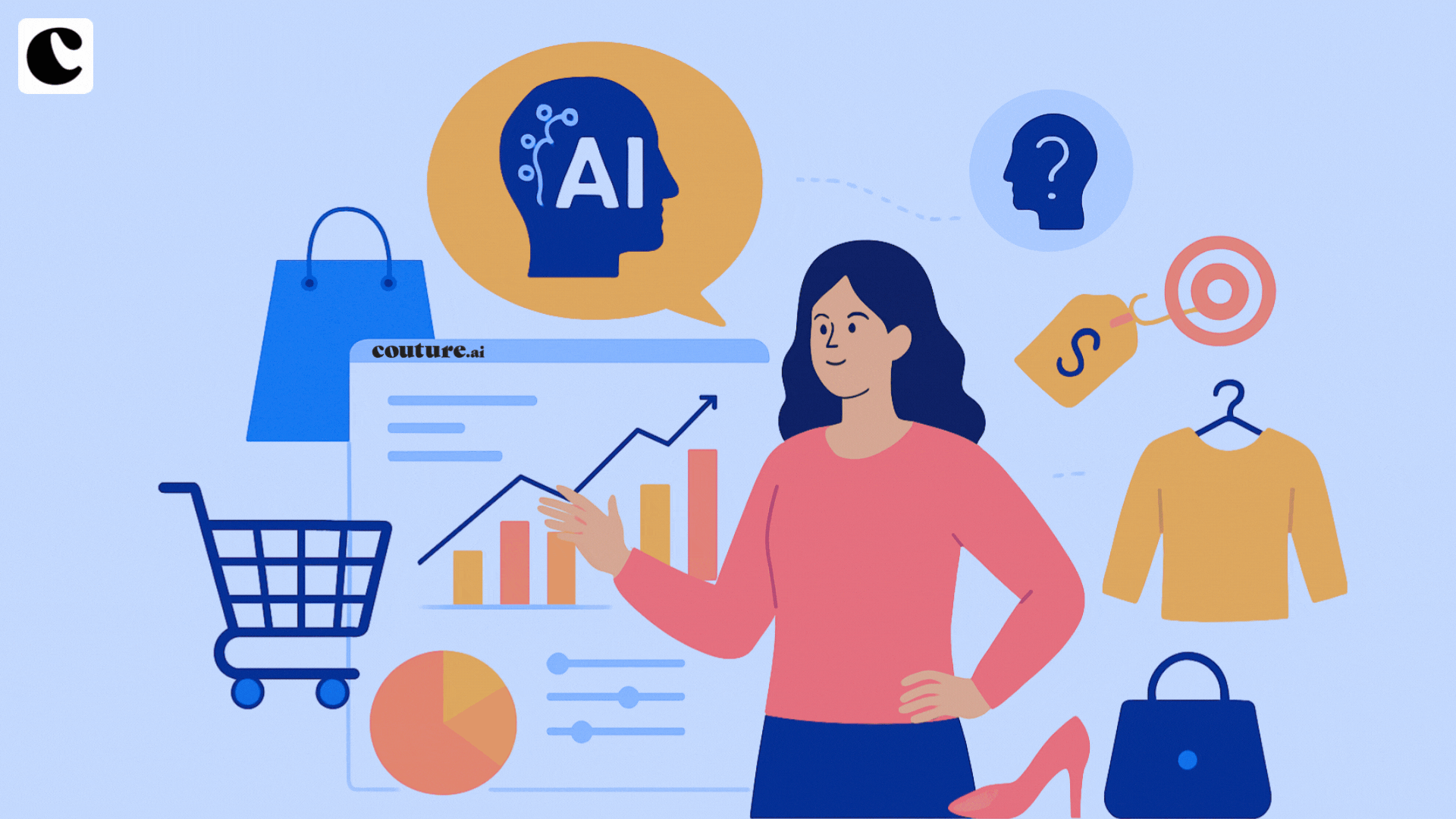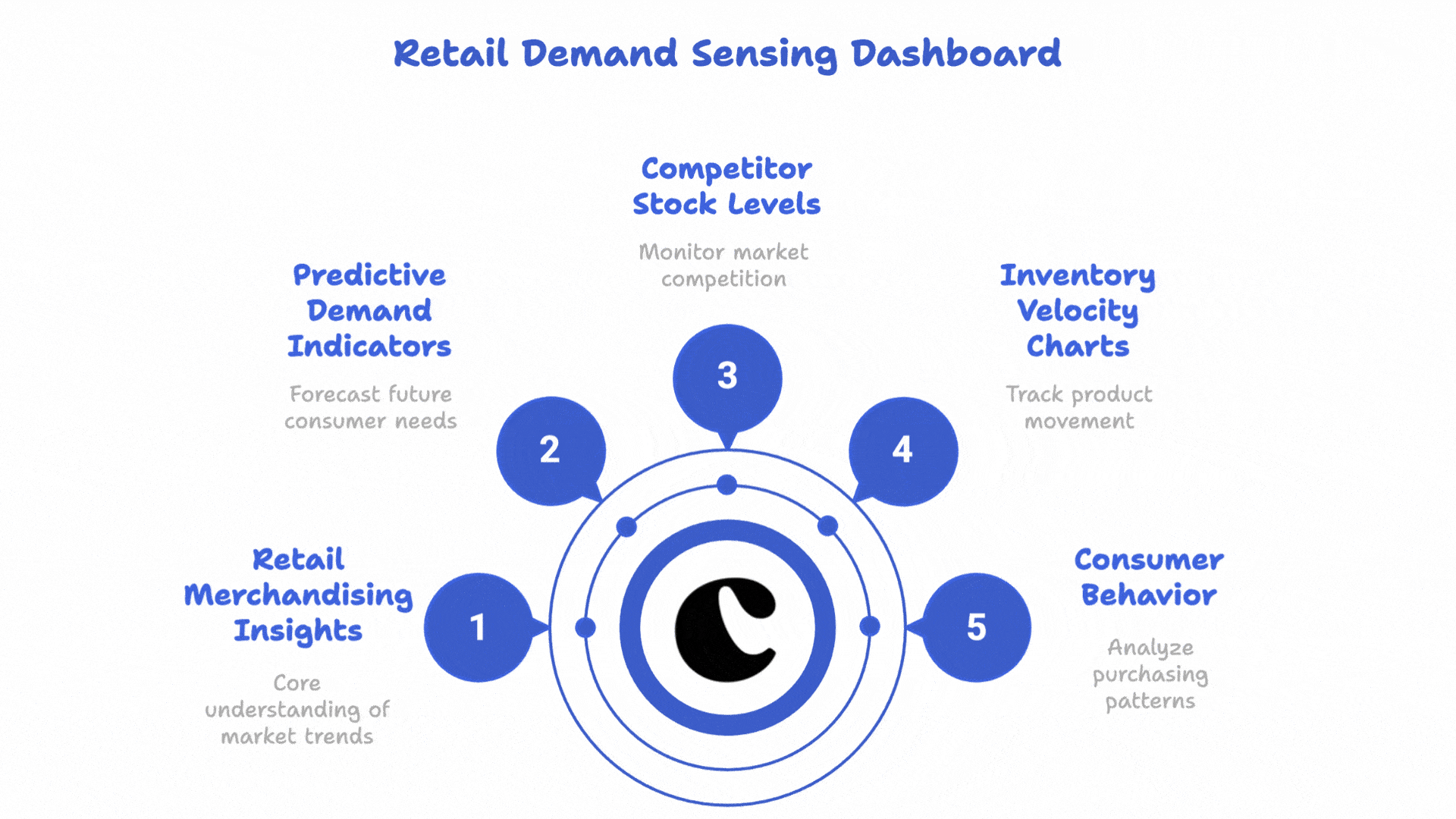Oct 09, 2025 | Couture AI Team
Consumer behavior prediction is used to indicate assumptions.
You'd pull last year's numbers. Check what the competition was doing. Run a few focus groups. Then place orders six months out and hope for the best.
That doesn't work anymore.

Here's what transformed: your customers leave data trails everywhere. Every purchase. Every click. Every product they browse but don't buy. The information exists - sitting in your POS systems, loyalty programs, and website analytics.
The concern not only exists in getting the data, perhaps knowing what to do with it.
And that's where AI merchandising comes into play.
These numbers make one thing clear: AI stands experimental and is becoming core infrastructure for the future of retail.
According to a NVIDIA State of AI in Retail 2024 survey, 42% of retailers already use AI, and an additional ~34% are piloting or evaluating it.
Most retail teams still forecast the same way they did 20 years ago.
All of these share one massive flaw.
They presume tomorrow will look like yesterday.
But consumer behavior doesn't work that way now. Supply chain issues push customers toward alternatives. Weather patterns shift and throw your entire forecast off.
You can't rely on quarterly reviews that tell you what you should've done three months ago.
In fact, in pilots using AI/ML forecasting, some retailers achieved a 33% reduction in forecast error compared to legacy methods
You need AI systems that adapt as customer behavior changes.
Retail data analytics powered by AI works differently.
Instead of just tracking what sold, it figures out why things sold. It connects patterns across data sources that a human team is unable to manually track.
The algorithms find connections your team might overlook.
In a knitwear pilot, a dynamic algorithm rack approach improved forecast accuracy from ~60% to ~80%.
Like how running shoe sales spike exactly three days after marathon registration opens in your area. Or how certain food items see demand jumps when specific recipes trend online.
This isn't future tech. Retailers are using this right now.
McKinsey predicts AI-based demand forecasting is now reducing forecasting errors by 20-50% and cutting lost sales up to 65% in some implementations.
Demand sensing takes consumer behavior prediction to another level.
Traditional forecasting tells you what happened last month. Demand sensing tells you what's about to happen next week.
When these signals shift, you receive alerts before they appear in your sales reports.
One footwear retailer (FLO) used AI demand forecasting + allocation to reduce lost sales by 12%.
Glimpse how real-time demand sensing can improve your inventory decisions. Explore Couture.ai's solutions and discover how leading retailers are using AI to remain ahead of demand curves.

Your assortment shouldn't be identical across every store.
Customer preferences change based on location, demographics, and local context. But managing hundreds of store-specific assortments manually? Nearly impossible.
AI merchandising automates this at scale.
The system analyzes every SKU's performance at every location. It identifies which products work for specific customer segments. Then it recommends assortment changes tailored to each store's demand profile.
One grocery chain used AI merchandising for its beverage category. They discovered stores near gyms needed different sports drink varieties than stores near schools.
Just from better product-location matching, the category saw measurable revenue growth.
The algorithms do in minutes what takes merchandising teams weeks. And they do it continuously - not just during quarterly reviews.
Let's break down a real scenario.
Let's suppose for summer coming a category manager for athletic apparel needs to decide
Look at last summer's sales. Assume similar patterns. Order based on gut feel about what's "trending." Wait and see what happens.
The system analyzes:
You order smarter. Stock arrives where it'll sell. Less markdown waste. Higher margins.
That's the difference between guessing and knowing.
Here's what changes when you get consumer behavior prediction right:
Customer expectations keep rising. Margin pressure keeps intensifying. Inventory costs keep climbing. You need every advantage you can get.
Consumer behavior prediction gives you that advantage. It helps you see what's coming instead of reacting to what already happened.
Keen to see what AI can do for your assortments? Book a free demo call with Couture.ai to explore how our solutions help retailers predict demand and optimize merchandising decisions. See the difference real-time analytics can make in your category performance.
Subscribe to get the latest updates and trends in AI, automation, and intelligent solutions — directly in your inbox.
Stay Informed: Insights and Trends from Couture AI
Join the AI revolution and elevate your retail experience with Couture AI.